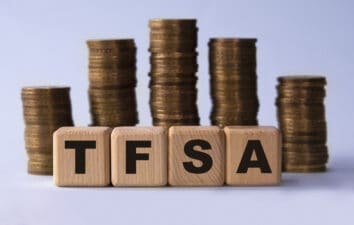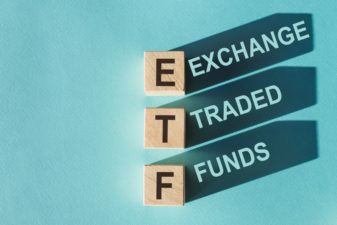Finding great dividend stocks in Canada can be a rewarding adventure, especially for investors seeking steady income streams. A solid strategy often starts with identifying companies with a strong history of dividend growth. According to a report by the Canadian Dividend Aristocrats Index, many of these firms have shown resilience during market downturns, with an average annual return of over 10% in the long run.
A well-rounded approach to selecting dividend stocks also includes looking at the payout ratio, which indicates how much of a company’s earnings are distributed as dividends. A payout ratio below 60% is generally considered healthy, providing a cushion for maintaining or growing dividends even in challenging times. By focusing on these factors, investors can uncover great dividend stocks that not only provide income but also have the potential for long-term capital appreciation. So, which comes out on top today?
Scotiabank
Investing in Bank of Nova Scotia (TSX:BNS) or Scotiabank for passive income can have its charms. Especially given its solid 6.55% dividend yield and a history of stable payouts. With a trailing price-to-earnings (P/E) ratio of 10.78 and a forward P/E of 9.31, the stock appears reasonably valued compared to many peers. The bank’s diverse business segments, including Canadian banking and global wealth management, help to mitigate risks associated with economic downturns.
Plus, its focus on maintaining a strong capital position, as evidenced by a common equity tier-one (CET1) capital ratio of 13.2%, provides a safety net for investors looking for stability in uncertain markets. With the bank’s established reputation and market cap of approximately $79.64 billion, it continues to be a contender for those seeking consistent income through dividends.
However, there are some cautionary tales to consider. The recent decrease in earnings and net income, alongside a rising provision for credit losses, may raise eyebrows for potential investors. A quarterly earnings decline of 2.6% year over year can signal potential challenges ahead, especially as economic conditions fluctuate.
Furthermore, the bank’s payout ratio of 70.55% suggests that a significant portion of its earnings is being returned to shareholders. This could limit funds available for reinvestment or growth initiatives. As with any investment, it’s essential to weigh these factors against your financial goals and risk tolerance. While Scotiabank offers appealing dividends, prospective investors should stay informed about its performance and market dynamics.
Enbridge
Investing in Enbridge (TSX:ENB) for passive income has its fair share of appealing aspects. With a robust dividend yield of around 6.9% as of writing and a long history of dividend growth, Enbridge is a favourite among income-seeking investors. The company’s large market cap of $115.45 billion and significant operations in both liquids and renewable energy ensure a diversified revenue stream. This makes it a reliable choice.
Despite some challenges, Enbridge’s adjusted earnings before interest, taxes, depreciation, and amortization (EBITDA) have shown growth. Plus, its commitment to maintaining a solid capital position is evident from its recast 2024 guidance. This anticipates increased contributions from recent acquisitions. For those seeking a stable income source, the combination of a strong payout ratio and consistent cash flow can be enticing.
On the flip side, there are a few red flags that potential investors should consider. The high payout ratio of 138.65% indicates that Enbridge is paying out more in dividends than it earns in net income. This raises questions about the sustainability of these payments in the long run. Additionally, the company’s significant debt load of $92.21 billion can be concerning, especially if interest rates continue to rise, which might impact future profitability.
While the firm has been growing its EBITDA and distributable cash flow, the increased financing costs and potential fluctuations in energy prices can introduce volatility. Altogether, while Enbridge offers a strong dividend appeal, it’s essential to weigh the risks associated with its financial metrics and market conditions.
Bottom line
When deciding between Scotiabank and Enbridge for passive income, it really depends on what you’re after! Scotiabank boasts a solid dividend yield of 6.55% with a more stable payout ratio, suggesting it can sustain its dividends more comfortably. However, Enbridge offers a slightly higher yield at around 6.90%, but its high payout ratio raises some eyebrows about future sustainability.
If you’re leaning towards a more conservative investment with potentially steadier dividends, Scotiabank might be the way to go. However, if you’re feeling a bit adventurous and want to capitalize on growth in energy and renewables, Enbridge could be a compelling choice. Both have their merits, so it really comes down to your risk appetite!







